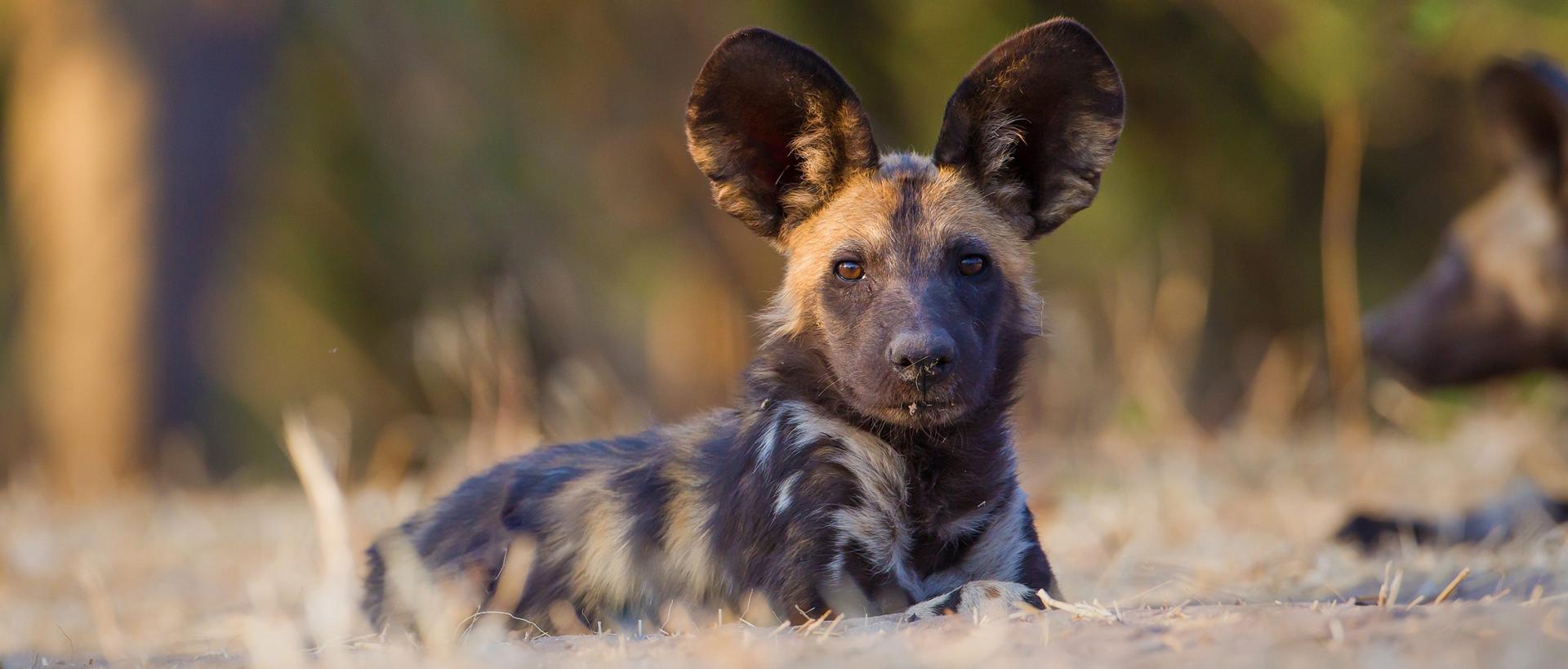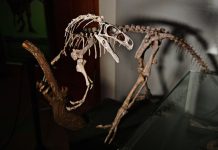Africa-Press – Eritrea. Before humans eyes, killing is brutal and activists say it’s supposed to be stopped. In the savannah this perception is not accepted because by killing individuals get their meal and improve their chance to survival.
Of all the animals in the wild, the African hunting dog is regarded as a deadliest killer, while weighing between 20 and 25 kilogrammes, a lonely is completely outsmarted by single wildebeest which weighs between 180 and 250 kilogrammes.
With this in their minds, African hunting dogs join hands to form a killing squad that is capable to overpower a strong prey like zebra and eland very easily.
Scientists say this is done while other dogs stand firmly to defend their prey against other parks or rival animals such as spotted hyenas, at this stage from one point to another, different members of the whole pack exchanging a leading role after every five kilometers.
Not all prey are killed after a short distance, some like Thomson’s gazelle who are more agile force African hunting dogs to increase their speed to 66 kilometers per hour to a point where their prey is exhausted.
Once African hunting dogs get closer to their prey to decapitate it, they will ferociously start to chops off primal cuts from soft parts of hind legs and abdomen of a live but frightened and exhausted antelope until the animal is unable to move.
All these factors give African hunting dog 85% success rate on every hunting attempt they do every day.
Just like other dwellers of the savannah, African wild dogs start their day by a highly respected morning ritualized greeting which involves sniffing and leaking each other while waving their tail and making birds like sound called twitter.
Different studies indicate that after the ritualized greeting the dominant male will make powerful Hoo like sound capable of reaching about four kilometers away which also ignite the quite hunting activity.
As the search for a meal get underway subordinate male dogs assume the leading role of going through the savannah land from one bush to another searching for a prey.
As the hunting activity is underway, African hunting dogs apply different strategies according to age, body size and health status of the prey.
While attacking a herd of wildebeests, African hunting dogs apply an ambush which send all animals into different directions in a panic as everyone try to serve own life.
On the other side the panic create an opening for African hunting dogs which allows them to isolate the vulnerable member such as sick, female, immature or older male who may be chased for about two kilometers before they are caught.
Most of the time the African hunting dogs live in a group called pack may split into two smaller packs which attack from two opposing directions and force their prey to assemble in a delicate position.
While in a frustration, these animals become prone for attacks from any direction but if this technique fails, the African hunting dogs will not give up easily they will try the isolation trick and chase the prey until it’s captured.
Strong antelopes such as Kudu and Gerenuk who own and defend their territory are attacked from all direction with all possible escaping routes being blocked.
This is done by positioning experienced dogs which are prepared to capture any prey on sight and capable of calling others for more assistance.
Different researches indicate that at this stage coward and lazy dogs are not encouraged to take part because courageous hunters will quickly take up their position into a strategic location.
By doing this, always African hunting dogs rush into a sight to help their colleague which is calling them for a prey captured.
Scientists say this is done while other dogs stand firmly to defend their prey against other parks or rival animals such as spotted hyenas.
It is said that when others fail to hear a call from their fellow, the dog which is on target may put up courage and force its prey to a trapping passions such as on river banks or swamp area.
At this point the animal thinks its now safe, on its side the dog will go back to seek assistance from other African hunting dogs which will come and surround the water body as long as it takes to take down their prey.
Weather it likes it or not, due to loose of blood and muscle failure the antelope will be forced to lie down in a position which make it prone for attacks and death.
In cruel manner African hunting dogs will spend two to five minutes to force a medium size antelope to the ground.
Scientists say they will need more than half an hour to bring down calves of buffalo and giraffe, adult zebra and wildebeest which most of the time will try to defend themselves.
Unlike lions in a pride which fight and scramble after a kill or hyenas who eat noisily and chaotically, African hunting dogs are very social animals who allow young member to eat first followed by subordinate members of the pack.
Then most senior members are allowed to eat but this culture enable the weaker to survive as stronger members are forced to go into hunting when the food is not enough for that day.
Meanwhile far from Serengeti ecosystem, deep in the Indian ocean there killer whales who share same life style regardless of their environment and geographical location.
Killer whales are also referred to as the orca whales or orca, and less commonly as the blackfish or grampus. These are toothed whales belonging to the oceanic dolphin family of which it is the largest member.
In the middle of Indian Ocean, Killer whales are notable for their complex societies.
Killer whales have a particularly complex and stable social grouping system, unlike any other marine mammal whose social structure is known, residents live with their mothers for their entire lives.
These societies are based on matrilines consisting of the matriarch and her descendants who form part of the line, as do their descendants.
These matrilineal groups are highly stable. Individuals separate for only a few hours at a time, to mate or forage.
These matrilineal groups are highly stable, individuals separate for only a few hours at a time, to mate or forage.
In the middle of Indian Ocean, closely related matrilines form loose aggregations called pods, usually consisting of one to four matrilines.
Pods use effective, cooperative hunting techniques like those we see from wild dogs whereby they chase and kill their victim without suffocation.
They feast on marine mammals such as seals, sea lions, and even blue whales by applying their sharp ten centimeters teeth on the flesh of their victims.
African wild dogs hunt by approaching prey silently then chasing it in a pursuit clocking at a top speed of 66 kilometers per hour for 10 to 60 minutes.
The average chase typically only goes as far as two kilometers, during which time the prey animal, if large, is repeatedly bitten on the legs, belly and anus until it stops running, while smaller prey is simply pulled down and torn apart.
Some people believe that African Hunting dogs prey on their fellow dogs but it has been proved that Killer Whales are cannibals who sometime attack, kill and eat each especially their weak fellows.
Killer Whales make a wide variety of communicative sounds and each pod has distinctive noises that its members will recognized even at a distance.
Male Killer whales typically range from 6 to 8 meters or 20 to 26 ft long and weigh 6 tones like a full grown African Bush Elephant in the wild.
Females are smaller, generally ranging from 5 to 7 m or 16 to 23 ft and weighing about 3 to 4 tones.
The killer whale’s large size and strength make it among the fastest marine mammals capable to reach a top speed of 56 kilometers per hour.
Killer whales have good eyesight above and below the water, excellent hearing, and a good sense of touch.
They have exceptionally sophisticated Echolocation mechanism which enables them to detect the location and characteristics of a prey and other objects in their environments by emitting clicks and listening for echoes.
Males sexually mature is at the age of 15, but do not typically reproduce until age 21 while female mature at around age 15 and bear a single offspring after a gestation period of 15 to 18 months.
Like in the wild of Savannah where half of calve of Lions dies, in the middle of the Indian Ocean more than half of baby Killer Whales die within their first seven months.
Female stop breading at the age of 40 while their lifespan is 50 years and maximum age is 90 years. Males live around 29 years on average and have a maximum age of 50 to 60 years.
In the Savannah, African lions suppress African wild dogs, and are a major source of mortality for both adults and pups.
In the sea, competition with fishermen also led to killer whales being regarded as pests.
On the other side, killer whale’s intelligence, trainability, striking appearance, playfulness in captivity and sheer size has made the specie a popular exhibit at aquaria and aquatic theme parks.
They are able to perform a spectacular show called breaching which involve jumping out of water into the air and slamming their body into the water again.
Killer Whales are present into all sea and oceans of the World including the Indian Ocean where they are frequently seen in an area between Tanzania and Seychelles.
Back in the savannah we found a coucal, this is a mysterious bird which popular known for its unique songs that is commonly sound Duuhduhduhduu, Duhduhduhduh.
As the rain season along the coastal regions is fading while it’s starting to pour on the northern highlands and other parts of Tanzania assure themselves that the season is good once they hear this beautiful song.
Unlike many bush dwellers of tropical Savannah these are elegant birds who lead a very good social life which is governed by the patterns of Monsoons winds whereby a male build his nest before the rains when good dry materials are available in the bush.
In a different state of art for approximately seven days the male bird needles together special materials and enhance it with strong sticks to make a 20 millimeters size nest.
This is hanged on a tree branch 6 meters above the ground then he will look for a breeding partner by making high pitched calls which we normally hear before the coming of the long heavy rains that last from the beginning of March to middle of June.
The birds live a romantic life full of rituals as female hear and accept the invitational call she will answer in a low lovely pitched cry and follow him to the nest where she will be seduced but if she is not ready to be mounted she may run from one tree branch to another.
These runs will send clear signals to the male who will run into the bush where he will search and bring a fat juicy lizard which will be presented to her as sign of his love.
From this point a female bird after eating may lower her tail and spread romantically toward his side as indication of acceptance and attraction for mounting.
Then the female will lay two to four eggs which will be incubated by the monogamy male of about 14 to 16 days while the she will go out to bring food and spend most of her time outside the nest guarding the nest until the hutching of the chicks when she become very violent to any intruder.
Longtime local hunters say because of love to her husband and the chicks, a female coucal may turn herself into a killer on rampage who fight and kill any bird which appear to cross or wonder near their nest.
Some people say if something dangerous such as fire happen the monogamous birds are known to carry their youngster into a safer area where they will quickly build a temporary shelter.
These elusive birds also know to repair their permanent nest where they spend most of time to raise chicks for many months until they are full grown with feather and powerful wings which enables them to fly away and start their own life.
For More News And Analysis About Eritrea Follow Africa-Press







